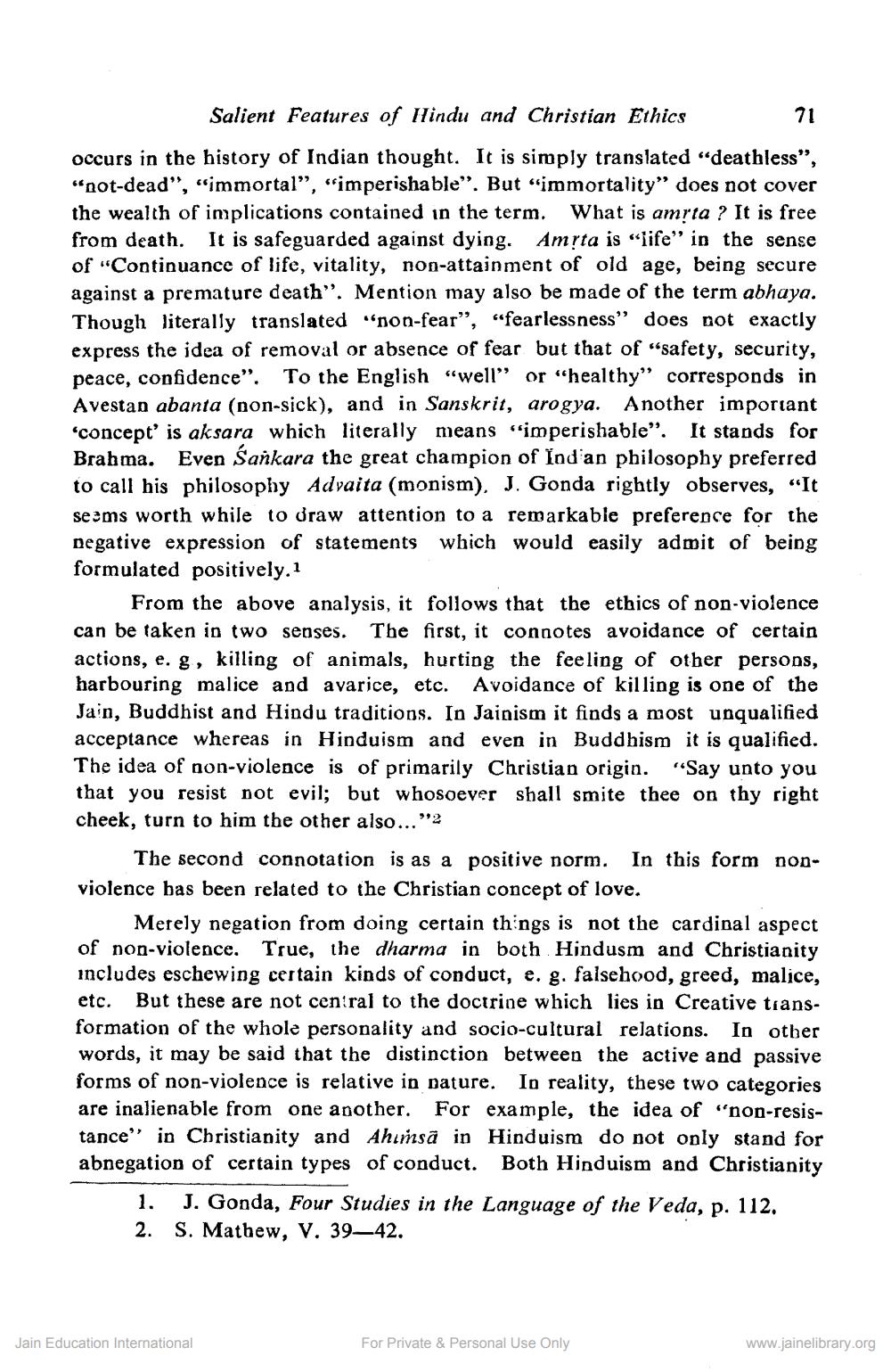________________
Salient Features of Hindu and Christian Ethics
71
occurs in the history of Indian thought. It is simply translated "deathless", “not-dead", "immortal", "imperishable". But "immortality" does not cover the wealth of implications contained in the term. What is amrta ? It is free from death. It is safeguarded against dying. Amrta is "life" in the sense of "Continuance of life, vitality, non-attainment of old age, being secure against a premature death". Mention may also be made of the term abhaya. Though literally translated "non-fear","fearlessness" does not exactly express the idea of removal or absence of fear but that of "safety, security, peace, confidence". To the English “well" or "healthy" corresponds in Avestan abanta (non-sick), and in Sanskrit, arogya. Another important 'concept is aksara which literally means “imperishable". It stands for Brahma. Even Sankara the great champion of Indian philosophy preferred to call his philosophy Advaita (monism). J. Gonda rightly observes, “It seams worth while to draw attention to a remarkable preference for the negative expression of statements which would easily admit of being formulated positively. 1
From the above analysis, it follows that the ethics of non-violence can be taken in two senses. The first, it connotes avoidance of certain actions, e. g, killing of animals, hurting the feeling of other persons, harbouring malice and avarice, etc. Avoidance of killing is one of the Jain, Buddhist and Hindu traditions. In Jainism it finds a most unqualified acceptance whereas in Hinduism and even in Buddhism it is qualified. The idea of non-violence is of primarily Christian origin. “Say unto you that you resist not evil; but whosoever shall smite thee on thy right cheek, turn to him the other also..."2
The second connotation is as a positive norm. In this form nonviolence has been related to the Christian concept of love.
Merely negation from doing certain things is not the cardinal aspect non-violence. True, the dharma in both Hindusm and Christianity includes eschewing certain kinds of conduct, e. g. falsehood, greed, malice, etc. But these are not central to the doctrine which lies in Creative transformation of the whole personality and socio-cultural relations. In other words, it may be said that the distinction between the active and passive forms of non-violence is relative in nature. Io reality, these two categories are inalienable from one another. For example, the idea of "non-resistance in Christianity and Ahinsa in Hinduism do not only stand for abnegation of certain types of conduct. Both Hinduism and Christianity
1. J. Gonda, Four Studies in the Language of the Veda, p. 112. 2. S. Mathew, V. 39–42.
Jain Education International
For Private & Personal Use Only
www.jainelibrary.org




